Different seasons carry with them a signature temperature. We need to acknowledge these weather changes and switch blankets.
This will contribute to better comfort and health throughout the season. A weather-suited blanket is pleasing to sleep in.
It also performs various tasks, allowing you to have a blanket around. This article explores suitable blankets for all four seasons. It contains more helpful information.
Understanding Seasonal Temperature and Comfort Needs
Geography, latitude, and wind patterns are a few factors that influence a region’s temperature. So, it will not be possible to state the exact temperature situation of a particular area. So here is a general review of the weather throughout the year.
Spring
Spring is an unpredictable season when it comes to temperature. This season brings a mix of sunny, windy, and rainy days. In other words, it serves as a transition between summer and winter.
If spring in your region is warmer, use light and airy fabrics. And if you experience a colder spring, you can use warmer materials.
Summer
Summer varies across the globe but is usually the warmest season. Humidity is also common in this season. The nights are often also warm due to prolonged and hot daylight hours. Summer is harsh in tropical regions as they lie on or near the equator.
Light and airy fabrics are suitable for most people in this season. Furthermore, textiles and technologies with cooling features ensure comfort in summer.
Autumn
Temperature drops and leaves turn yellow as autumn progresses. In polar regions, you can experience snowfall towards the end of autumn. Winter approaches.
How warm you want your blanket this season is an individual choice. It is based on region and preference. Some heavy bedding and blankets are more suitable for this season.
Winter
Winters are diverse across the globe, with varying levels of frost. Higher altitude regions experience snow, while some areas face no snowfall. Regions near the equator generally face more gentle winters. Contrary to that, the areas further away are colder in this season.
Insulation or warmth is crucial for comfort in winter. Various insulating technologies and warm blankets can provide this necessary warmth.
Spring Blankets
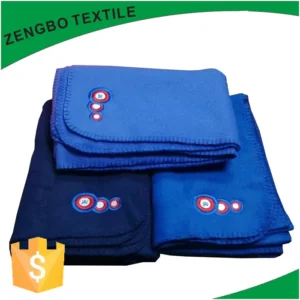
A blanket made up of lightweight and breathable fabric is more suited to this season. Choose a blanket based on the spring temperature in your region. The temperature is different throughout this season so that you can layer blankets. This way, you can adjust the warmth to your liking.
Here is a list of blankets and their characteristics suitable for this season.
● Linen Blankets: This airy and moisture-wicking fabric guarantees a comforting and calm experience
● Cotton Blankets: Cotton blankets are soft and lightweight, making them suitable for spring
● Muslin Blankets: If spring in your region is on the warmer side, these blankets are a good choice
Microfiber blankets are lightweight and provide warmth and comfort. They are suitable for cold spring nights.
Summer Blankets
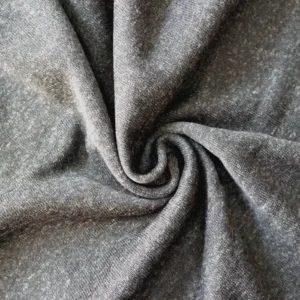
The blankets ideal for use in summer consists of lightweight, breathable, and airy materials.
Furthermore, moisture-absorbing or quick-drying blankets are something to look for use in summer. Linen, bamboo, and Tencel blankets are favorable for this season.
Remember your area’s temperature and humidity while choosing a blanket. You don’t need a heavy-duty blanket this season, but a light and comfortable cover.
Here are the details of the various blankets. They consist of materials discussed earlier. This will give you a better idea.
Linen blankets are made of a natural fabric. Linen has many good qualities, such as breathability, durability, and absorbency.
Bamboo blankets are made from the fibers of bamboo plants. This fabric is soft, breathable, and.
● Tencel blankets: Tencel or lyocell formed from wood pulp has various summer-favorable characteristics
Furthermore, the materials listed in the spring section are also suitable for summer. These include cotton and muslin.
Autumn Blankets
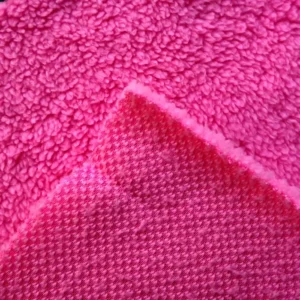
The blankets that suit autumn should be warm but comfortable with good breathability. A medium-weight blanket with good layering capacity is suitable for this season.
The blankets with these characteristics include cotton blankets, cotton blend blankets, flannel blankets, layered blankets, fleece, and wool blankets.
Here is an elaborate list of suitable autumn blankets:
● Cotton blankets:
As mentioned above, cotton is a breathable material and is ideal for this season too
● Cotten blend blankets:
These blankets consist of a mixture of cotton and other materials. This adds extra properties.
● Flannel blankets:
A mix of cotton and synthetic fibers, this blanket is warm yet lightweight
● Layered blankets:
These blankets will allow you to adjust warmth according to your comfort levels
● Fleece blankets: These are a good option for those who live in regions where autumn is not cold
● Wool blankets: Wool is an insulating material that ensures comfort
Winter Blankets
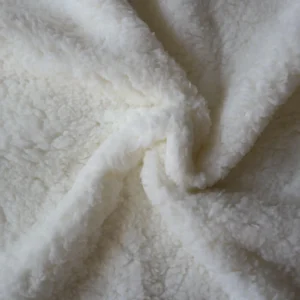
Winters often need thick, insulating blankets to feel warm and comfortable. Here are some blankets that can protect you from winter’s frost:
● Dense wool blankets: A lot of wool in a blanket ensures a very comfortable and warm experience
● Down comforters: Made from bird feathers, these are insulating yet lightweight
Electric blankets consist of various insulating materials. They can be best for layering over other blankets for rapid warming.
● Sherpa blankets: These are plush and cozy with good heating abilities
Factors to Consider When Choosing Blankets

The characteristics of a perfect blanket vary for everyone due to various factors. Until now, we have been discussing blanket choices based on temperature. Other factors include material, maintenance, health considerations, and more. This part consists of these aspects considered during blanket choosing.
Materials
It’s common knowledge that different fabric materials suit different people. Some prefer softer ones while others choose a bit coarse. Various textures of blankets result from constituting different materials. The quality, weight, and softness depend on the fabric’s material or mixture.
Care Instructions
Some blankets are easier to wash than others. So they will better suit those who want to spend less time maintaining their blankets. Others have to be dry-cleaned. Care instructions vary for all blankets. Consider them when selecting a blanket.
Health Considerations
Always ask about a blanket’s materials when choosing one. This can help you avoid health issues. You can prevent allergies by doing this, which makes this step necessary. , some blankets can lead to respiratory difficulties or irritation. Hypoallergenic blankets are a much safer option if one is prone to these reactions.
Blanket Size
, knowing the purpose of a blanket before choosing one is more convenient. Different bedding settings must vary blanket choices. For example, a layered setup requires a blanket over a sheet fitted on a mattress and another blanket on top.
If you’re going for a minimalistic setup, use neutral-colored blankets. Avoid busy patterns.
Always look up the standard sizes of the blanket you’re looking for after deciding its purpose. Large beds must have oversized blankets, while a couch can accommodate a smaller one. Similarly, travel and picnic blankets differ in size, making them more useful and more accessible to carry around.
Popular Blanket Materials and Weaves

Here is a list of popular blanket materials:
● Cotton: This lightweight material is moisture-absorbing, hypoallergenic, and machine washable
● Wool: It is an excellent insulator that is durable and provides much warmth
● Fleece: Made from polyester fibers, it is soft, non-bulky, and quick-drying
Flannel is a mixture of cotton with other materials. It provides excellent warmth and softness without being heavy.
Here is a list of proper blanket weaves:
Sateen weave utilizes abundant thread to produce smooth, heavy blankets. This tight weave is the reason.
● Herringbone weave: V-shaped or zigzag pattern that is airy and stylish
● Percale weave: It is woven to give a smooth texture that is resistant to pilling
Flannel weave: Spun into a medium-weight fabric that is soft, warm, and cozy.
Maintainance and Care Tips
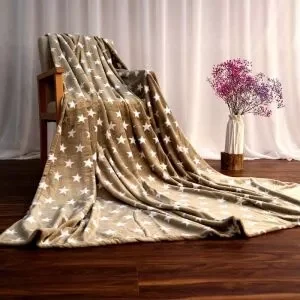
Earlier, we discussed the importance of considering blanket maintenance before choosing one. In this potion, we will further elaborate on this topic and provide some tips in an attempt to be helpful to you.
Each blanket type has a different way of washing. But these are the general steps:
1. Read the care label or instructions on the blanket.
2. Pre-treat visible stains using gentle chemicals.
3. Select the proper water temperature according to the care instructions. Delicate blankets need a gentle water cycle. Harder ones are fine with a regular cycle.
4. Choose a mild detergent and avoid harsh chemicals like bleach and fabric softeners.
5. Ensure the blanket has enough space to move around in the washing machine.
6. Once washed, dry the blanket by laying it on a clean surface or using the clothes dryer of the machine.
Also, shake out and rotate your blankets to ensure they last a long time.
Conclusion
Now you know the various blankets suitable for different seasons. You also know the factors determining this choice. Furthermore, you learn the various factors to consider while choosing a blanket. You also learn how to maintain one. Consider your personal preferences and comfort to find the perfect blanket for yourself.
